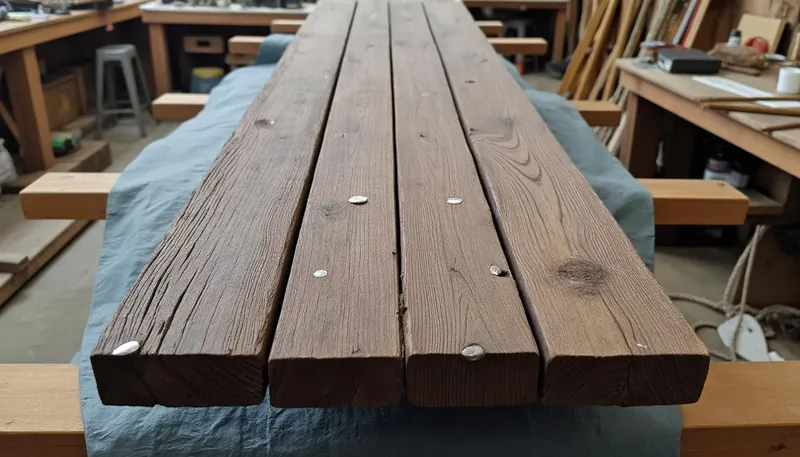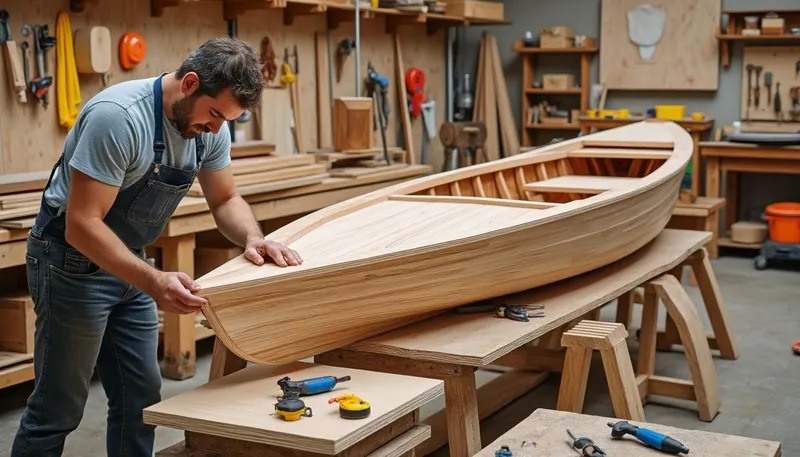When it comes to boat construction, the thickness of wooden planks plays a crucial role in determining the overall durability and functionality of the vessel. This is particularly true for traditional wooden boats where plank thickness directly affects weight, strength, and water-tightness of the hull. The ideal thickness can vary based on a range of factors including the design of the boat, the type of wood used, and the intended use (inshore versus offshore). With advancements in techniques and materials in 2025, understanding plank thickness has become a blend of art and science, ensuring that builders can produce boats that meet modern standards while also honoring time-tested traditions.
To establish a guideline for plank thickness, it’s important to consider the different construction methods available. Traditionally, wooden boats have been built using methods such as carvel, lapstrake, and cold-molded techniques. Each method has its own requirements when it comes to the size and thickness of planks. For instance, in carvel construction, planks are laid edge-to-edge, leading to a smooth hull. These planks typically range from ½ inch to ⅝ inch thick for larger crafts, while smaller boats could use planks as thin as 3/16 inch. In contrast, lapstrake construction involves overlapping planks, where the thickness can be slightly less due to the additional structural support provided by the overlapping layers.
Understanding Wooden Plank Thickness in Boat Construction
When choosing the appropriate thickness for wooden planks, it’s essential to factor in the intended use and type of boat being constructed. As boat builders aim to create both functional and aesthetically pleasing vessels, they often have to balance between sufficient thickness for strength and a thinner design for efficiency.
Different Types of Wood and Their Impact on Thickness
The choice of wood significantly influences the required plank thickness. Some woods possess natural properties that lend themselves well to the rigors of marine environments without needing excessive thickness. For example, NauticalWood varieties like mahogany or teak are not only strong but naturally resistant to rot, allowing builders to use thinner planks without compromising on strength. On the other hand, softer woods like pine or cedar require slightly greater thickness to maintain structural integrity.
Design Considerations for Plank Thickness
Ultimately, the design of the boat — whether it’s a racing sailboat, a pleasure cruiser, or a commercial fishing vessel — dictates the optimal plank thickness. A racing sailboat demands more lightweight materials to achieve speed, hence thinner planks can often be used. Conversely, for a fishing vessel built to endure harsh conditions, thicker planks may be necessary to provide durability and strength.
| Type of Plank | Use Case | Typical Thickness |
|---|---|---|
| Carvel | Racing Yachts | 1/4 inch to 1/2 inch |
| Lapstrake | Rowboats | 3/16 inch to 1/4 inch |
| Cold-molded | Offshore Vessels | 1/2 inch to 5/8 inch |

Real-World Examples of Plank Thickness
To ground this discussion, let’s explore some real-world examples of boat builders who have successfully navigated the challenges of plank thickness. For instance, consider an artisan at MarineWoodWorks who crafted a stunning 26-foot sloop. This particular project involved careful planning regarding plank thickness to balance weight reduction while ensuring durability. The builder chose 1/4 inch thick mahogany planks for the hull, allowing for a lightweight vessel that didn’t skimp on strength.
Another impressive example is found at BoatCraft, where a kayak was constructed using 3/16 inch thick cedar planks. The choice of cedar, combined with the thinner construction, meant an exceptionally buoyant and agile craft catering to racing enthusiasts. This shows how thoughtful consideration of plank thickness can influence performance. Both builders reported that their choice allowed them to maintain traditional aesthetics while embracing modern techniques.
Plank Thickness According to Boat Size
Often, the size of the boat directly correlates with the required thickness of its planks. Here’s a quick breakdown:
- Small Boats (Skiffs, Canoes): 1/8 inch to 1/4 inch thick
- Medium Boats (Rowboats, Sailboats): 1/4 inch to 3/8 inch thick
- Large Boats (Yachts, Fishing Vessels): 3/8 inch to 1 inch thick
Alternatives to Traditional Thickness: Innovations in Boat Building
While traditional wooden planks have their place in the hearts of many boat builders, innovations in materials have opened up new possibilities for construction techniques. For instance, materials like composite synthetics and flexible woods have allowed builders to reimagine plank thickness without compromising integrity.
Benefits of Innovative Materials
Using modern materials can lead to various benefits in terms of weight, cost, and ease of workability. For example, ThickTimber has introduced a composite plank that weighs significantly less than traditional wood yet maintains impressive strength. Similarly, WoodWave has developed a hybrid material combining the beloved aesthetics of wood with the resilience of fiberglass, opening avenues for lighter, thinner planks that don’t sacrifice durability.
Environmental Considerations in Choosing Materials
As boat builders embrace innovations, considerations around sustainability also emerge. It’s important to choose materials that not only fit the structural requirements but also align with eco-friendly practices. Using responsibly-sourced woods or innovative materials can help in maintaining a minimal environmental impact.
| Material Type | Impact on Weight | Durability Rating |
|---|---|---|
| Solid Wood | Moderate | High |
| Composite Synthetic | Low | Very High |
| Hybrid Woods | Low | High |

Practical Considerations for Plank Thickness
Ultimately, determining the proper plank thickness requires a comprehensive understanding of variables like design, intended usage, and material properties. It’s wise to always consult with experienced builders and to rigorously test various methods to discover what works best for your particular vessel. Additionally, the existing framework of the boat (including ribs and frames) will influence how thick or thin each plank can be safely allowed to be.
As the boating community moves forward into 2025, exploring different thickness parameters will be vital as personal and commercial boat designs evolve. Builders interested in maximizing their boats’ effectiveness should focus on harmonizing traditional knowledge with emerging techniques.
- Keep the design intention in mind! ⚓
- Choose the right wood for your needs. 🌳
- Consider using innovative materials for weight and durability. 🔍
What is the ideal thickness for traditional wooden boats?
Typically, traditional wooden boats require planks ranging from 1/4 inch to 1/2 inch thick, depending on the design and size. Larger vessels may require thicker planks.
How does wood type impact plank thickness?
The type of wood influences both strength and weight. Denser woods may allow for thinner planks, whereas softer woods may need to be thicker for added strength.
Can I use composite materials instead of wood?
Yes, modern composite materials provide excellent durability and weight advantages while maintaining the beauty of traditional designs.
What construction method is best for durability?
Lapstrake and cold-molded constructions are known for their durability due to overlapping planks, providing additional strength.


